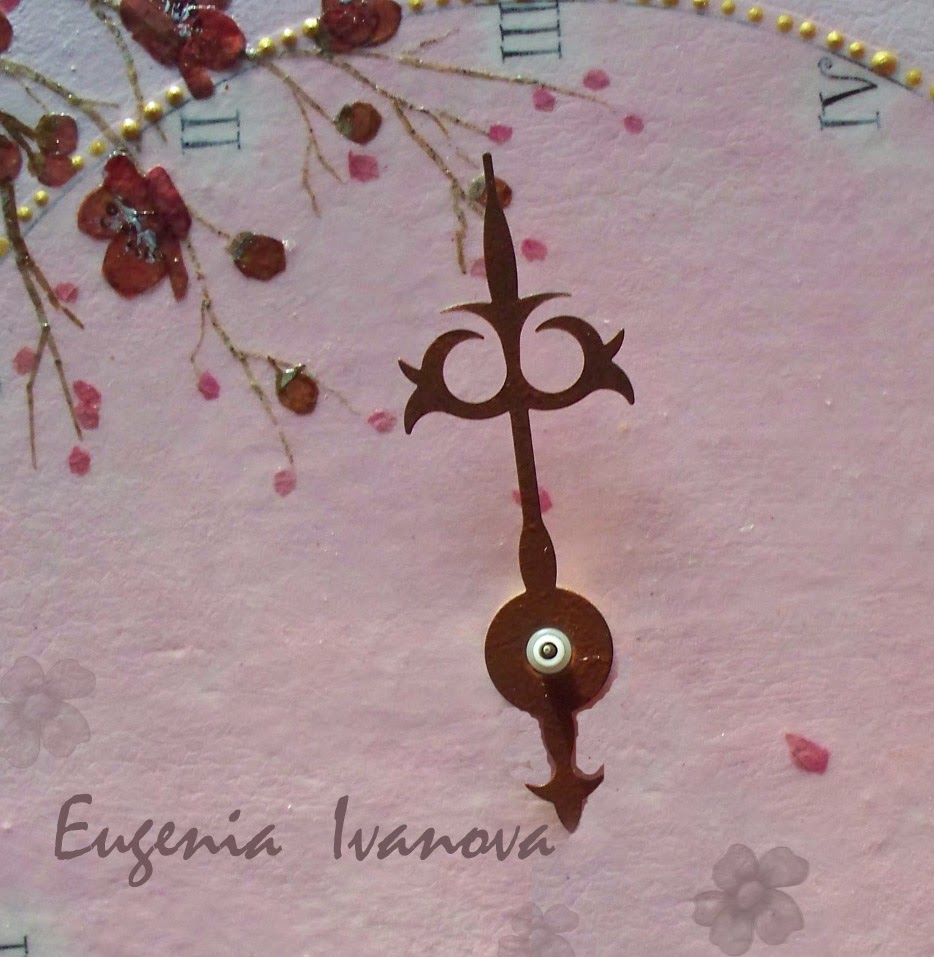February is very cold so far but the sun is shining brightly and the days are drowing out. In 2-3 months all trees will be in flower here. And I already have the spring time and the birds singing at my home!
The unfinished wood piece for a clock and paper clock-face picture were in my stocks for a long time. At last I have made this wall clock inspired by Chinese paintings.
I have lacquered my work for the first time.
The varnish is needed here to protect the picture from a dust and to make the cleaning easier.
Spray varnish doesn't allow you to applay thick coats and there is a chance to hurt the pressed plant picture for dusting. In this reason I have chosen liquid varnish.. This is acryl varnish based on synthetic resin - Marabu Klarlack:

It self-levels for coating and the brush doesn't leave any marks. Also a coat of the varnish dries fast.

I found out some new things about pressed leaves owing to this experience with the varnish. The pressed material soaks some varnish up and this process is irregular. As a result I have several needless spots on the bird's body.
I made the bird from Swida alba leaves. So if you want to lacquer your work, do not use these leaves.
However you can see that my favorite brown leaves under snow are unchanged. And red leaves of Virgin grape are perfect condition too.
Warm and happy spring to all!
How to fix clock movement
Usually standard set of clock movement includes circle rubber washer, brass washer and brass nut which are on the movement spindle. The clock hands are standard and for sale in craft shops .
Take the brass parts away. Place the rubber washer (it is needed for good locking the movement) over the movement spindle.
Push the spindle through the hole from the back of the dial. My wood piece has special hollow on the back side for clock movement.
Place the brass washer over the spindle and then just tighten the brass nut on the thread until the movement is held firmly.
Push the hour hand then the minute hand on to the spindle making sure they point to the 12.
Push the second hand on to the spindle.
Now roll the wheel on the clock movement to fix the time and then put the battery. That is it - your clock will start.


















